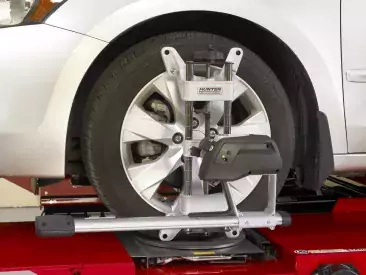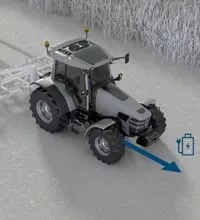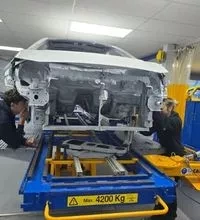How to keep those wheels straight and true

Here’s how to get wheel alignment right, no matter how technologically advanced the vehicle is
Previously the domain of the enthusiast looking for high-level performance, four-wheel alignment is now a common service on a range of modern vehicles.
Proper road contact, improved fuel efficiency, longer tyre life – these are all reasonable expectations for any motorist. That’s why alignment has been brought more sharply into focus in recent years, and customers are more aware of it than ever before.
As cars become more advanced, the importance of alignment grows. For example, more complex and comfortable suspension systems don’t pair well with poor road surfaces, especially when the suspension is carrying heavier weights as vehicles get bigger.
The safety aspect of accurate alignment has also been better communicated to motorists in recent years. A correctly aligned vehicle not only benefits from improved handling, but also offers reduced braking distances compared with a misaligned vehicle.
Of course, prematurely worn tyres are still a major factor for motorists when considering alignment, especially if an illuminated Tyre Pressure Monitoring System (TPMS) light is showing, but the sophisticated user interfaces on modern vehicles are also now delivering highly accurate information regarding fuel efficiency. Alignment offers a potential improvement on this front too.
Staying true
The Ackermann principle hasn’t changed with the inclusion of new technology; fundamental mathematics still determine the geometric arrangement of the wheels, tracing out circles of different radii around a central point. This means that a low-tech solution is still possible even for the most high-tech vehicles, although more modern tooling has undeniable benefits.
Still, even with sophisticated modern monitoring systems and clever workshop tools, it’s easy to forget the basics. Wheel alignment is set to become ever more important with the greater reliance on Advanced Driver-Assistance Systems (ADAS), and more so again with the emergence of true self-driving technology, so it will definitely be worth refreshing the basics through your continuing professional development (CPD).
These underlying principles may have originally been developed to prevent horse drawn carriages from tipping over, but as we enter an age where vehicles are incredibly advanced – and becoming more so by the day – greater reliance will be placed on accurate alignment.
And, naturally, that means alignment will come under greater scrutiny during mandatory testing.
Your wheel alignment CPD checklist:
- Check tyre pressure. This is a basic point, but it’s regularly missed. Reset the TPMS if required.
- Four-wheel alignment, even for a fixed-beam rear axle, brings important measurements such as thrust angle into the equation. A full alignment is far more involved than a front wheel-only “tracking” or “toe and go” service.
- Understand which repairs affect alignment and communicate this to the motorist before undertaking any repairs (the manufacturer’s data will often stipulate if a wheel alignment check is required).
- ADAS calibration must start with a wheel alignment.
- Wheel alignment is subject to MOT testing for fly-by-wire systems and can be a reason for rejection. For more information, see Section 2.2 of the inspection manual for vehicles in classes 3, 4, 5 and 7.
This is an edited extract from IMI's new MotorPro magazine, received free as part of IMI membership




